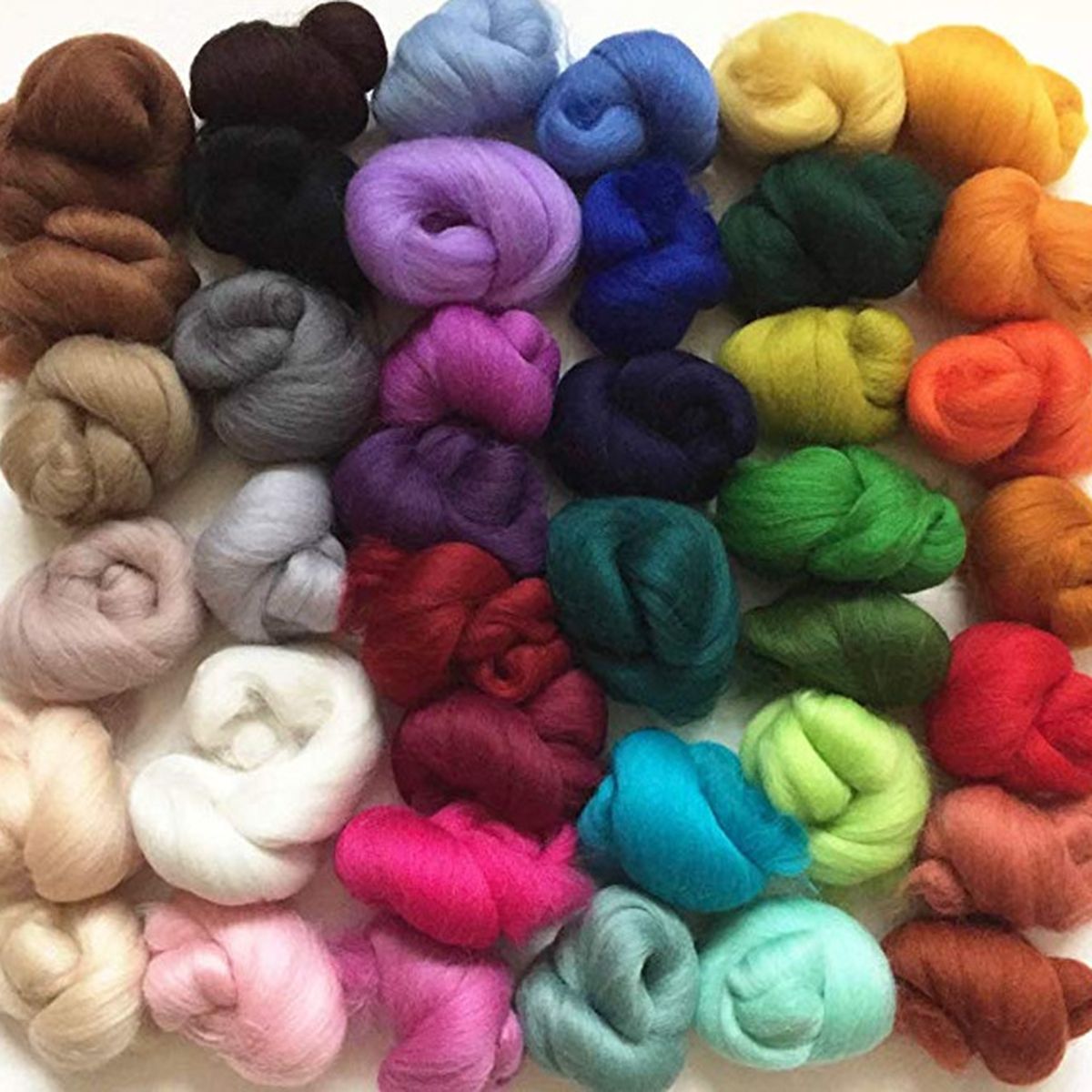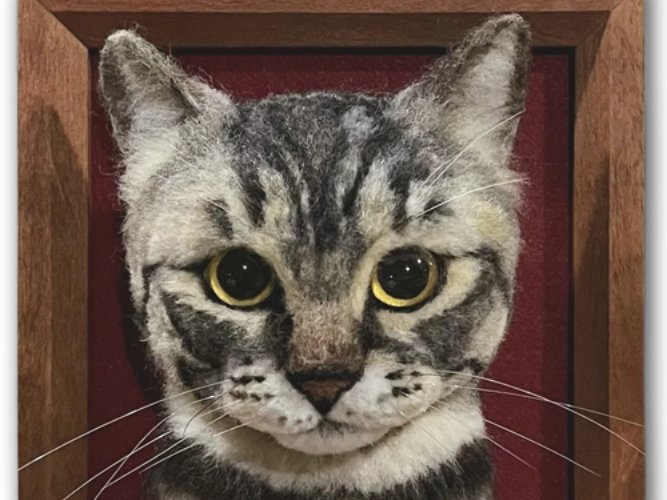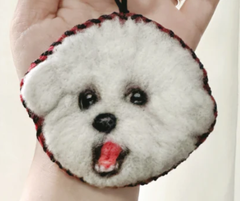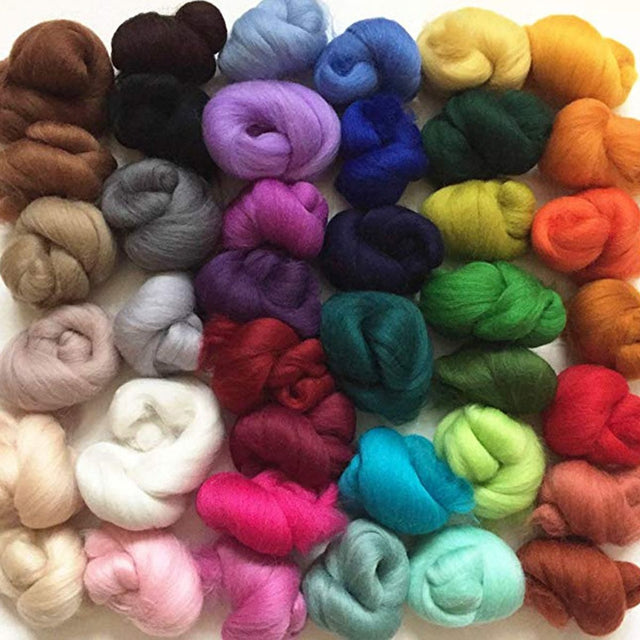Wool Felt or Felted Wool Which Should You Choose for Your Project

Choosing between woolfelt and felted wool depends on your project. The main difference lies in their production methods. Woolfelt is created by pressing fibers together, resulting in a material that holds its shape well and doesn’t fray, making it ideal for crafts, keepsakes, or art projects. It also comes in vibrant colors. Felted wool, on the other hand, is woven wool that has been shrunk and pressed, offering warmth and flexibility, which makes it better suited for clothing or home items.
Common Uses and Characteristics |
|
|---|---|
Arts and Crafts |
Woolfelt is commonly used for crafts, school projects, and decorations. |
Garment Manufacturing |
Felted wool is preferred for scarves, hats, and mittens. |
These clear tips will help you choose the right material for your project.
Key Takeaways
Wool felt is made by pressing wool fibers together. This makes a firm and smooth fabric. It keeps its shape and does not fray. Wool felt is great for crafts and keepsakes.
Felted wool starts as woven wool fabric. It is shrunk and made tighter. This makes it soft, warm, and flexible. Felted wool is good for clothes and home items.
Use wool felt for projects that need neat edges. It is best for firm shapes, decorations, or detailed art. Pick felted wool for things that need warmth and bending. It works well for scarves or blankets.
Both wool felt and felted wool are strong and natural. They are eco-friendly and last a long time if you care for them.
Try a small piece of each fabric before you start. This helps you find what works best for your project. It makes sure your creation looks and feels right.
Woolfelt vs Felted Wool
Woolfelt Overview
You can find woolfelt in many craft stores and kits. Woolfelt is made by pressing and matting loose wool fibers together. The process uses heat, water, and machines to make a thick fabric. Factories use needles to push the fibers together tightly. This makes woolfelt in many thicknesses and densities. Woolfelt comes in lots of bright colors and sizes. It keeps its shape and does not fray when you cut it. That is why people like it for crafts, decorations, and keepsakes.
Woolfelt starts with raw wool fibers like roving or batting. These fibers are mixed until they tangle and form a solid fabric. The finished woolfelt is smooth and soft but also strong. Good woolfelt is made to last and not wear out fast. You can use woolfelt for projects that need neat edges and a firm shape.
Tip: Woolfelt is great if you want felt that is easy to cut, shape, and sew. You do not have to worry about the edges fraying.
Felted Wool Overview
Felted wool is not the same as woolfelt. You start with woven or knitted wool fabric. Then you shrink and tighten it with hot water and movement. This is called fulling or milling. The wool fibers move and lock together. The fabric gets thicker and denser and has a bumpy texture. Felted wool keeps some of the old fabric’s look but is stronger and warmer.
Felted wool uses natural wool with oils that help it resist water and smells. The felting process makes it good at keeping heat in. Felted wool is breathable, does not catch fire easily, and bends well. You can use it for clothes, home items, and accessories. Good felted wool is strong and comfy, but you should be careful so it does not shrink more.
Woolfelt: Made from loose wool fibers that are pressed and matted into felt.
Felted wool: Made from woven or knitted wool fabric that is shrunk and tightened into felt.
Both woolfelt and felted wool use natural wool. But they start with different materials and are made in different ways. Woolfelt gives you a smooth, steady fabric for crafts. Felted wool gives you warmth, texture, and flexibility for clothes and home things.
Key Differences
Production
The way wool felt and felted wool are made is different. Wool felt is made by pressing loose wool fibers together. This uses heat, water, and pressure. The fibers stick together to make a thick fabric. Felted wool starts as woven or knitted wool fabric. Hot water and movement shrink and tighten the fabric. This makes the fibers lock and changes how it feels.
Here is a table that shows how each is made and how this changes the fabric:
Aspect |
Wool Felt (Non-woven) |
Felted Wool (Varies by technique) |
Traditional Wool (Woven) |
|---|---|---|---|
Production Method |
Wet felting (moisture, heat, pressure) or needle felting (barbed needles) |
Similar felting processes, varies by technique and fiber quality |
Spun and woven fibers from sheared wool |
Structure |
Dense, matted fibers forming a solid fabric |
Dense fabric, characteristics depend on felting method |
Woven fabric with crimped fibers |
Texture & Durability |
Dense, durable, water-resistant, holds shape well |
Similar but varies with method and fiber quality |
Softer, flexible, elastic due to fiber crimp |
Water Resistance |
High, due to dense matting |
Generally water resistant, depending on felting |
Moderate, aided by natural oils |
Insulation |
Good natural insulation, retains warmth even when damp |
Varies, generally insulating |
Excellent insulation due to air pockets in fibers |
Usability |
Easy to cut without fraying, shape retention, suited for crafts and industrial uses |
Varies, often used in decorative arts or specific applications |
Preferred for garments needing warmth, flexibility, breathability |
Quality Control |
Density and thickness adjustable by pressure and method |
Varies by technique and fiber quality |
Quality depends on wool type (e.g., Merino, Cashmere) |
Tip: How you make the fabric will change how it feels, works, and lasts.
Texture
Wool felt feels smooth and stiff when you touch it. The fibers are packed tightly, so the fabric is firm. This makes it easy to cut and shape for crafts. Felted wool feels softer and less stiff. It can stretch a little. You can see and feel tiny fibers on its surface. This gives it a warm and cozy look.
Wool felt: Smooth, stiff, keeps its shape, not bendy.
Felted wool: Soft, bendy, stretches a bit, you see fibers.
The feel of each fabric changes how you use it. Wool felt is best for projects that need sharp edges and a firm finish. Felted wool is better for things that need to bend, like clothes or blankets.
Durability
Both wool felt and felted wool are strong and last a long time. Wool felt is made from good wool, so it lasts for years. It does not burn easily and does not wear out fast. You can use it for crafts, keepsakes, or clothes. It keeps its color and feel for a long time. Wool felt is tough and keeps you warm.
Felted wool is also very strong. Felting makes woven wool thick and tough. People use felted wool for things like shoe soles or furniture. Both types use wool’s natural stretch and ability to handle moisture. If you take care of them, both will last many years.
Wool felt is made from 100% wool, so it is strong, soaks up water, does not burn easily, and keeps you warm.
Wool felt is great for crafts and clothes that need to last.
Felted wool is thick and strong, good for things that need to be tough and warm.
Both types are bouncy and last a long time.
Note: Craft felt made from plastic does not last as long as wool felt or felted wool. For projects that need to last, always pick real wool.
Appearance
You can tell wool felt and felted wool apart by looking at them. Wool felt looks smooth and flat. The fibers are packed so tight you do not see any loose threads. Felted wool, sometimes called boiled wool, looks softer and more like cloth. You can see tiny fibers on the top and it can stretch a bit.
Attribute |
Wool Felt |
Felted Wool (Boiled Wool) |
|---|---|---|
Fabric Type |
Non-woven fabric made by matting wool fibers tightly together |
Woven fabric made by shrinking knitted wool fabric |
Texture |
Stiff, smooth, not flexible, tightly interlocked fibers |
Softer, less stiff, some elasticity, visible fine fibers |
Appearance |
Smooth, matte, fibers completely meshed |
Visible fine fibers on surface, softer woven look |
Wool felt gives a neat, modern look. Felted wool looks warm and natural. Both keep you warm, but the look and feel help you pick which one to use.
Wool Felt Fabric Uses

Crafts
Wool felt fabric works well for many craft projects. People use it to make finger puppets, animal shapes, garlands, baby mobiles, and holiday decorations. This fabric is easy to cut and sew. It does not fray, so your edges stay neat. You can dye it bright colors or leave it plain. Wool felt fabric is strong and bends easily. You can make flat or 3D crafts with it.
Finger puppets and dolls
Holiday ornaments and garlands
Educational toys and puzzles
Wall hangings and home décor
Tip: Wool felt fabric comes from a renewable source and breaks down naturally, so it is a good choice for eco-friendly crafts.
Accessories
Wool fabric is great for making accessories that look nice and work well. You can make key rings, brooches, jewelry, bags, scarves, and charms. Wool felt fabric keeps its shape, so your items look tidy and last long. The soft, thick wool felt feels good and looks smooth. You can find it in many colors and shapes, so you can try new ideas.
Accessory Type |
Examples |
Benefits |
|---|---|---|
Jewelry |
Brooches, bead necklaces |
Lightweight, colorful, durable |
Bags & Pouches |
Zipper pouches, small handbags |
Holds shape, resists moisture |
Home Accessories |
Coasters, wall hangings |
Insulates, easy to clean |
Felt makes every accessory strong, pretty, and natural.
Keepsakes
Wool felt fabric is great for keepsakes you want to keep for a long time. Pawimprint uses pure wool felt to make pet portraits, frames, and special memorials. The tight fibers make this fabric tough and hard to break. You can bend it many times and it will not tear or wrinkle. Your keepsakes will stay nice for years. Artists use 3D needle-felting to make soft, lifelike pet portraits.
Custom pet portraits and frames
Mini stuffed animal keychains
Personalized ornaments and memorials
Wool felt fabric can show small details, does not fray, and is safe because it does not catch fire easily. Your keepsakes will stay bright and special for many years.
Felted Wool Applications
Clothing
You will find felted fabric in many types of clothing, especially for cold weather. People often choose this wool fabric for hats, scarves, and coats. The dense structure of felted wool traps air, which gives you excellent warmth and insulation. You stay comfortable even when the temperature drops. This material also resists water and dirt, so your clothes stay clean longer. Felted wool holds its shape well, making it perfect for hats and outerwear. You can count on this fabric to keep you warm and protected. The natural fibers also help wick away moisture, so you feel dry and cozy. Many people love the soft feel and the way it keeps out the cold.
Tip: If you want clothing that offers both warmth and durability, felted fabric is a smart choice.
Home Textiles
Felted wool works well in your home, too. You can use this fabric for blankets, cushions, and even upholstery. The thick, fluffy texture of felted fabric adds extra warmth to your living space. When you use it for pillows or throws, you get both comfort and style. This wool fabric stands up to daily use and keeps its shape over time. You will notice how it helps insulate your home, keeping you warm during chilly nights. The natural look of felted wool also brings a cozy feeling to any room.
Accessories
Felted wool shines when you use it for accessories. You can make slippers, bags, hats, and more. This felted fabric is strong and durable, so your items last a long time. It is easy to clean, which helps you keep your accessories looking fresh. You will find many colors and patterns, so you can match your style. The puffy, soft texture gives extra warmth and comfort, especially in slippers and mittens. Felted wool is also eco-friendly, since it comes from a renewable source and can be recycled or composted after use.
-
Benefits of felted wool accessories:
Durable and strong
Easy to clean
Warmth and comfort
Versatile style options
You can enjoy both the practical benefits and the cozy warmth that felted wool brings to your everyday life.
How to Choose
Project Needs
Think about what your project needs before you pick a fabric. Wool felt is dense and smooth. It keeps its shape well. This makes it good for things like pet portraits, ornaments, or frames. Wool felt is easy to cut. It does not fray, so your edges stay neat. Many people use it for keepsakes and eco-friendly crafts.
Felted wool is softer and bends more. It works for clothes, bags, or home items that need to stretch. Felted wool can feel smooth or rough. This depends on the wool and how you felt it. Merino wool feels soft and fine. Coarse wool is stronger and looks more rustic. Wet felting makes the fabric firm. Needle felting lets you make soft, detailed shapes.
Think about the planet when you choose your fabric. Both wool felt and felted wool come from natural fibers. They break down in nature, so they are good for the earth. Using wool from good sources helps the environment and your projects.
Tip: Try a small piece of wool before you start. This helps you see if it is strong, soft, and looks right for your project.
Quick Guide
Here is a simple guide to help you pick:
Project Type |
Best Material |
Why Choose It? |
|---|---|---|
Crafts & Keepsakes |
Wool Felt |
Keeps shape, neat edges, lasts long, breaks down naturally |
Clothing & Accessories |
Felted Wool |
Soft, bends, warm, good for green crafting |
Home Textiles |
Felted Wool |
Warm, strong, rustic look, breaks down naturally |
Detailed Art |
Wool Felt |
Smooth, easy to cut, good for green crafts |
Both fabrics are good for the planet and last a long time. Pick the one that feels and looks right for your project. Wool felt is firm and neat. Felted wool is warm and bends easily.
You now know the key differences between wool felt and felted wool. Wool felt gives you crisp edges and holds its shape, making it perfect for crafts and keepsakes. Felted wool feels softer and works well for clothing or home items. Experts suggest starting with medium carded wool for easy shaping and smooth results. Try both materials to see which fits your project best. If you want a special keepsake, explore Pawimprint’s custom wool felt pet portraits for a heartfelt touch.
FAQ
What is the main difference between wool felt and felted wool?
You make wool felt by matting loose fibers together. You create felted wool by shrinking woven wool fabric. Wool felt feels smooth and firm. Felted wool feels softer and more flexible.
Can you wash wool felt and felted wool?
You should hand wash both materials gently in cool water. Hot water or rough handling can cause shrinking or misshaping. Lay flat to dry for best results.
Which material works best for detailed crafts?
Wool felt works best for detailed crafts. It holds its shape, cuts cleanly, and does not fray. You can create sharp edges and small shapes with ease.
Is wool felt safe for children’s toys?
Yes, wool felt is safe for children’s toys. It comes from natural fibers, does not fray, and resists fire. Always check for non-toxic dyes if you make toys for kids.
Can I use felted wool for pet keepsakes?
You can use felted wool for pet keepsakes, but wool felt gives you sharper details and a smoother finish. Pawimprint uses pure wool felt for lifelike pet portraits and custom keepsakes.

